If you're new here, you may want to subscribe to my RSS feed. Thanks for visiting!
What’s the difference between an arm-chair survivalist and the real deal? The difference between someone who could get by for a few weeks and someone who could thrive indefinitely?
One word – action.
I was lucky enough to meet someone who is the real deal recently. Mark is a long-term survivalist, and he graciously answered about a million questions about his lifestyle. The end result was, I learned a lot, including how little I actually know in comparison to someone who lives an off-grid, non-consumer life every single day. Even better, I have permission to share this information with the rest of you in the form of a new series: Long-Term Survival.
Mark lives in the desert, and he’s off the grid. His well was dug by hand over the course of a month. His shelter is built by hand. There is no indoor plumbing and he cooks most meals outdoors over a fire. He’s a big believer in tools and skills over beans and rice.
Daisy: What does bugging out mean to you?
Mark: My “bug out kit” is tool heavy for food, shelter, and fire. Everything else is a luxury. So I would not pack a lot of the stuff others might be going for. If I was bugging out, I’d plan for it to be for the long haul. I’d want a set of tools that would make life easier and almost guarantee that you would have a roof over your head, food in your belly, and fire to keep warm by. I am going to carry tools over comforts because the comforts can eventually come from using the tools.
Daisy: Is this the kind of kit you’d recommend for anyone who is interested in building the ultimate bug out kit?
Mark: Well, you have to practice with the tool set I am going to talk about and become comfortable with them. Also, remember that your mind is tool number one and the best tool you can exploit.
Daisy: Why is your bug-out plan so different than the basic plan we see outlined on all of the prepping sites?
Mark: If you look around at everyone’s “bug out bag” and “bug out plans,” they all revolve around a 3 day disaster or getting to your “bug out location”. Not many people are set to “bug out” for the long haul. But what if you couldn’t look back? What if bugging out meant 30 years instead of 3 days, or if there was no home to come back to? If it came down to bugging out, I’d want to far far away. I’d be building a semi-permanent shelter and starting a trap line and learning all the hunting trails. Then, when its time to move south for the winter I’d pack my stuff and walk to my warmer spot, and do the same thing. I want to have a life, not always be running around like a squirrel after a nut once things really collapse, like history has told us EVERY other society like ours has done.
Daisy: So if you had to just grab one bag and go, what tools would be in it?
Mark: In my opinion, there are 5 tools you need to have, and some of these have multiple uses: a Swiss Army champion knife for your medical kit , a Leatherman crunch for repairs, a CRKT Folts minimalist hunter neck knife for small game skinning and utility (best neck knife around and it is only 25 bucks. I personally use it and also the tano one as a utility knife both on neck but one will do, the hunter), a Mora “light my fire” camp knife – it’s a utility medium game skinning with build in ferro rod, and a medium size forged axe with at least a 2lb head 2.5-3lb would be best – it’s one step above a hatchet for shelter, fire wood, large game skinning, and protection.
Daisy: Wow, you answered that quickly!
Mark: You should also add for readers that these tools are for your hands only. They mean your survival, so never lend them out to anyone, not even parents, children, brothers, sisters, husbands, or wives. They should all have their own. These are yours and yours alone.
Daisy: Okay, let’s go over these different tools. Tell me about the Swiss Army knife that you recommend. (Link to this tool – $74.99)
Mark: The Swiss army knife is high grade stainless steel. This is important because it can be sterilized and has a very sharp fine edged blade that can basically double as a scalpel. There are several tools in The Champ that can lend themselves to helping in a medical emergency. There is a magnifier to look for ticks and other parasites, as well a pair of decent tweezers for tick or sliver removal . Fine scissors to cut bandaging or other types of cloth and light materials…the list goes on. Trust me when I say you will be happy you have it along in your medical kit if an emergency ever arises.
Daisy: And what is the Leatherman Crunch? (links to info on this tool and where to buy it – $73.60)
Mark: The crunch is a mini “vise-grip” with a groove in its nose to lock down on something like a sewing machine needle, if you need to use it to sew for repairs. It has some screw drivers: a small common blade (flat), a medium common blade, and Philips (cross). As well, there is a rasp, a file, a large screwdriver, and a serrated knife that is graduated in both standard and metric to measure and can cut light wire like copper, aluminum, brass, or bronze. It also has a bit driver, and all of the tools lock into place. It is one of the few tools Leatherman makes that falls under the category of “heavy duty” in their line up.
Daisy: What is a neck knife? (link to this tool – $22.82)
Mark: A neck knife is a small all around utility/skinning knife that is always right there within reach. I prefer a hunters blade. This is the knife you will be doing most of your daily small game skinning and other light camp chores with. Never leave home with out it, as you never know when and where you might need it.
Daisy: Can you tell me more about the “light my fire” knife? ( links to less expensive tool $28.01 and higher quality tool $69.99)
Mark: I prefer having a dedicated knife that is married with a ferro rod “fire steel”. That way you have a medium duty knife for skinning, camp utility, carving, and a last ditch resort to make sure you have a fire. Mora makes a very nice and economical bushcraft knife/ferro rod set. You can shop around – several knife makers are now making hunter-bushcraft/fire sets. You want a high carbon steel blade on this knife if you can because the ferro rod will work better. Do not skimp on quality for anything less than a Mora on this item. Mora would be the low end for price, and yet still provide a quality knife that you can rely on.
Daisy: And, finally which axe would be best and what can it be used for? (link to information about the tool and where to buy the tool – about $79)
Mark: The Hultafors hunter’s axe is a high quality choice. Hultafors is the oldest axe company in the world. They have been forging axes since 1697 and their axes are much less expensive than the competition’s axes. This is not the absolute highest quality axe, but it is still a good quality, forged axe. I actually have one of these, its smaller brother, and a carpenter axe from this company, and I love them all. The Hultafors hunter’s axe is in the “classic” line and is around 85 bucks, with maybe a tiny bit more for shipping vs. 150+ bucks from the competition on production-forged axes of this size. You can use this tool for building an advanced shelter, for all of your camp amenities such as table, chair, loo, etc. It can also be used for harvesting all the firewood you need, as well as skinning and splitting any large animals you may have hunted, trapped or found as “road kill”. [laughter] Also, it can be very effective as a weapon to protect yourself. I can guarantee that if you practice with an axe and follow through on a heavy swing you will damage anything wild attempting to get you in its jaws.
Daisy: I’m sure it would also deter anything human attempting to cause you harm.
Mark: You do as you wish. I don’t want people thinking I am a crazy human killer. [laughter]
***
These tools are tried and true, and Mark owns them all. At an investment of less than $300, they could easily mean the difference between life and death, or at the very least, comfort and misery. He also recommends the addition of a rasp or file and a short honing strop to keep the tools sharp and tuned up.
About the contributor:
Mark lives in the desert in the American Southwest. He was raised in a survivalist family, and this has been his lifestyle for as long as he can remember.

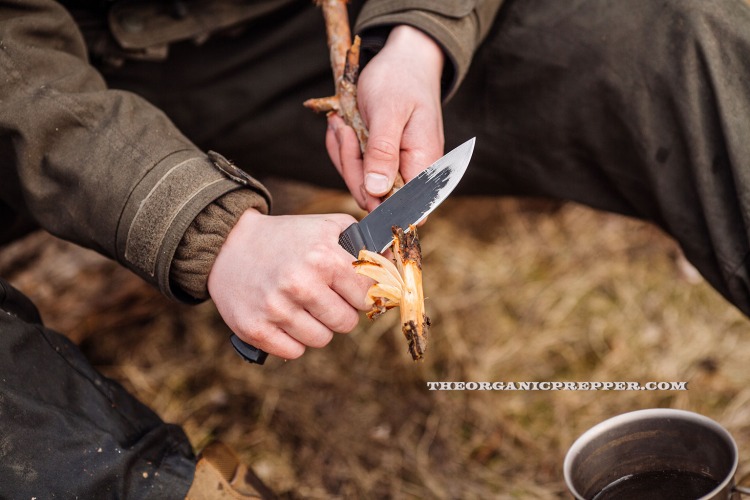
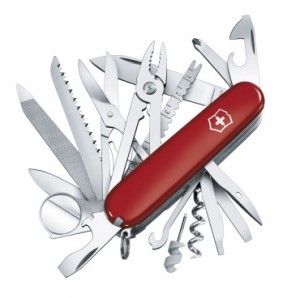
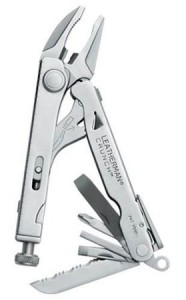
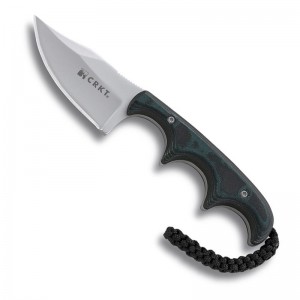
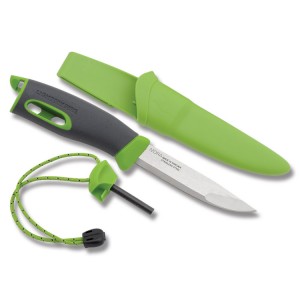
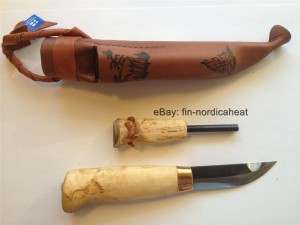















22 Responses
I had to look up ‘short honing strop’. I’m thinking it’s just a fancy name for a piece of leather.
So far, the directions I’ve looked at talk about using honing oil (or jeweler’s rouge. What the heck is that?) with the strope, I wonder what Mark uses? And, how often does he use it?
I would guess he uses an old belt.
Also, I wonder what type of rasp or file he uses? Does he use them only to sharpen his axe? I would think a stone would be better for sharpening a knife blade? I’m no expert, though. (But a stone could break.)
You are correct, I originally had a section of an old belt as a tool strop :D. Then my father gave me a box of large leather scraps he recycled from our local saddle maker that passed away. Now my “short honing strop” “tool strop” – whatever you want to call it 🙂 is a piece of semi-soft heavy leather 4″ x 8″x1/8″ the same length as my rasp / file. After trying several stropping compounds over the years I have settled on this one http://www.woodcarvers.com/yellowstone.htm as my favorite and it is what I carry with my tool strop. First, it works very well and secondly, it comes in a nice plastic tube and has history behind it. The compound is basically a one-time purchase as it is a lifetime’s worth; unless you make a living off of honing other peoples tool edges.
There are lots of good videos and information online showing the proper way to strop tools. Basically you lay the leather strop flat on a raised surface so you can hold the knife handle and keep the blade flat on the strop, put the compound on holding it like a piece of chalk and scribbling some of the compound on kind of all over the leather but don’t put it on way thick, a little goes a long way. I prefer the smooth side of the leather, some people prefer the suede side. Then you drag the cutting edge backwards under its own weight until you get to the end of the strop, then flip it over and drag it the other way. Keep doing this with care not to cut the leather when you flip the tool over each time. Do this until the edge is formed. Before long you will have the hang of it and be able to feel the drag and know what’s going on with the edge. At first, it will take a while to get your edge formed, but once you form it, keeping it maintained does not take long at all.
This type of sharpening / honing will form a convex edge on the blade. Using a stone removes a lot of material in comparison to stropping. A stone would also be a good addition to your sharpening / honing kit. I personally have a few but rarely if ever use them. I find a properly maintained edge from a strop, used correctly with skill, will rarely if ever need to be filed or ground with a stone – only honed on a strop.
Stropping is like keeping a finish polish on a razor sharp edge. The best time to strop is when the tool is starting to dull if you are actively using it, or right before a project is also a good time. Generally I only strop when the tool is dull and I only file when the tool is damaged.
The rasp / file http://www.homedepot.com/p/Cooper-Tools-Nicholson-8-in-4-in-Hand-File-21860N/100134991#specifications is for fixing wooden tool handles if you accidentally “ding” them or worse, break them. You will be able to form a good handle with a rasp. The file is for fixing the cutting edge if it gets chipped or to fix the tip of it if it gets broken, or to re-profile after either of those problems.
This is what I use and how I do it. I hope this helps.
That does help, Mark.
Thanks for the response.
Valuable stuff to know.
If you’re on a budget I think you could get by just fine with a small vise grip which costs much less than the crunch, since most of the attachments on the crunch are duplicated on the swiss army knife. I also think a plain old magnesium fire starter would due instead of a 4th knife (if you include the swiss army knife as a knife).
Hi John. Technically you’re right, this would save money. However, the purpose of the Swiss Army knife is for your medical kit. You aren’t going to want to use the same tools for wound care that you’d use for cutting metal or performing repairs on equipment. So, personally, I agree with our contributor that two different tools are better in this instance. Another thing to keep in mind is that this article is about long-term survival, not “let’s stabilize the wound until the ambulance arrives and we take the person to the hospital.” We’re thinking about a world without easy-access antibiotics and healthcare, so it’s very important to keep your medical kit dedicated to that purpose.
As for the duplication, never forget the adage, “Two is one, and one is none.” Wouldn’t you prefer to have an extra knife than no knife at all in the event that one gets lost or broken? If you can have a back-up in the same amount of space, it seems like the best decision.
Thank you for your input – discussion adds value and information to every article!
John I firmly believe in having a ferro / mag bar always handy as well, for as long as that lasts. I also keep a piece of flint with me and a small tinder box that doubles as a char cloth maker. The ferro / knife combo is not for starting fires with everyday. It is my emergency back up that I hope I never have to use because that means I have lost my pack or something bad like that. I have personally found the Swiss Army Champ and Leatherman Crush to be invaluable to me in the long term field situation, and would not trade either of them for another tool, the same goes with the neck knife. The rest of the tools can be “best” you can find or afford I guess. 😀
I also should point out I personally carefully ground the “small screw driver” into a leather punch / awl, and the “large screw driver” at the end of the file into a wood chisel.
Where can one purchase the Hultafors HBJY085 850g Classic Hunting Axe in the United States? Thanks for the article
I believe these people http://bigbeartools.com/store/#!/~/product/category=6903474&id=25880150 sell to the USA and Canada. Might contact them and make sure. The price is in Canadian so it will be less in US dollars.
One of MY new favs, is the Kobalt multi-drive wrench.
I now keep a pair of these in EVERY vehicle. (And, a single in the big-out-bag.)
Having two in the cars is instrumental for handling opposing nuts/bolts. Whereas, in the BoB, I use my Leatherman for opposing force (to save on weight.)
While I/we indeed prepare our BoB for LONG-TERM bug-out situations (and it’s NOT just a 72-hr kit.) We DO find that MOST of our bug-out situations and such are indeed “short term.” As a matter of fact, MOST are VERY urban-oriented! (e.g. bugging-out for an approaching hurricane in the Southeast, or an approaching/threatening forest fire out west, etc.) MOST of the time, we are just “falling back” to friends or family (or a hotel/motel) for a few days/weeks, until we can safely return “home.”
Thus, we need CAR (urban) tools, more than we need tools for skinning prey. We need the ability to quickly replace a water pump on the car/truck (or fuel pump, alternator, etc.)
I can’t say that I would toss-out any of these recommended five tools in favor of the multi-wrench. So, I guess I’m saying, that there is a SIXTH tool for the BoB to consider?…
P.S. This Kobalt multi-wrench has become our “go too” gift for family & friends for holidays, birthdays, etc. EVERYONE should have several of these! (Even in the tool drawer at home!)
P.S.S. I/we don’t work for Kobalt or Lowes. As a matter of fact, when we went to Lowes to buy a few of these last Fall, they said they didn’t stock them normally. Instead, they are “holiday” items, that are only stocked during certain times of the year. So, we bought ALL of ours online via eBay, instead!
Peace.
Finally someone that understands bugging out. Where did this 72 hour bag come from? Who made this up? Not that it isn’t reasonable, but “what if” you can’t come back to your home. It’s just common sense that if you have to bug out, your probably not coming back. Tornado, Fire, Hurricane, EMP. You are definitely not coming back. If you even have a house left! Then you are left with long-term survival. I don’t understand short term thinking either. It’s much better to plan ahead and not so short sighted. Great article!
Most people have little concept what it takes to survive more than 24 hours. They also are overly reliant on a fixed position, usually making their homes into ‘bunkers’. My advice for the poor man’s survival prep is to locate all these bunkers in your area.
Long time survival means living in nature. Thanks for your tips and suggestions.
Great article, Daisy, and I’m really looking forward to hearing more from Mark!
Unless you are living off the grid or an outdoorsmen, there is something everyone overlooks: Gloves. Your hands will likely not be ready for SHTF life. You should have surgical gloves, work gloves and warmth gloves if you are in a cold area. Also if you are in an urban area, I recommend a small fire extinguisher. It can be used as a weapon and fire is a common threat in civil disorder scenarios. I also recomment pen/pencil and a small notebook. Being able to take notes and write things down (directions, maps, instructions, etc) can really help.
Excellent post, and following comments. Everyone can learn something new every day which helps.
I have several knives. A Mora, Schrade Papa Bear, various Schrade, Gerber and Benchmade pocket knives. Also Cold Steel defense style and larger size and small hatchet for shelter building. A new double blade ax was recently added to my collection. Two edges go dull slower, but it is large. Not bug out bag size. I’m not sure that the neck knives are legal in some areas, as they are concealed. Not a problem in a SHTF situation. In fact much better! Smaller is much better for skinning and cleaning game. Sharpening gear goes with knives. Stones, hones etc. I’ve used old leather belts for touch ups. A file is good to have for unintended damage which may happen. I’ve seen knives sharpened with stones so much they were weak. Just ask a butcher. I’ve found that a quick touch up to keep them sharp is much better than letting them get to the point that you can see the dull edge.
long term survival means subsistence.
with 90% of US population living urban, theres little connection with reality…
I suspect that there will be millions with knives and hatchets,
and almost no one
with a decent grub hoe….
we need to quit calling it survival and start thinking in terms of subsistence…
neoindigenousliving.com
G
There is no reason to Carry 5 blades … maybe 2 as to have a backup. These 5 tools could be consolidated into 2 or 3 and you would still have the same working capacity and utility with less stuff to pack and less weight to carry. The Swiss knife is overkill especially when you can get multi-tools that have a hearty plier and there are many multi-tool configurations that will suit your personal presence of utilities that will get the same job done as the Swiss knife. The axe is great but if weight is an issue, you can do just as well if not better with a good machete especially cut a trail through think overgrown terrain. My tools preferences would be/are machete/axe, multi tool and a ferro rod or 2. No need to carry a sharpening stone or file as there are plenty of naturally suitable rocks can be found to sharpen the tools if needed especially river rocks.
There are a lot choices out there for knives, multi-tools and water handling and purifying. Good Article!
Mark’s perspective as a long term established survivalist is a lot different than mine which is basically when an event happens making sure I’m prepared to deal with it. Mark’s is a lifestyle, mine is more of a defensive preparation. Very good article, thanks!
Thank you for sharing this article, Daisy. Kudos to Mark! He really did list high-quality items that we must have in our Bug Out Bags that could help us for long-term survival.
With a single 42-watt solar Panel + 12 volt car battery + possibly an inverter, the tool luxury enormously expands to solder iron, drills, circular saw, metal jig saw, grinders, screw-drive, small chain saw, scythe, brushcutter, even a tiny folding motor scooter that we have from China recently, dies & taps, also a home made lathe, sewing machine, fan, lights, TV, radio, pumps, laptop or tablet, LEDS etc.
Mark makes a good basic list.
I was born an raised on a land grant / homestead in the Richarderson Mountains of Alaska. I too was taught by my Dad, as well as GranDa’s and several uncles. Those childhood lessons have served me well on my own Bush homestead and working an living around the world.
Marks personal choices in knives, especially the Swiss Army Champ, are worthy choices. I’d add a pocket folder such as a Kershaw Grinder which I carry. I also grew up packing a Hudson Bay ax which I prefer.
There are several tools I would add to his “basic” list of must haves. They are, in no order of priority….:
Military entrenching tool, best you can find
Miners pick, short handle hardened point an hoe bit.
Break down Bow Saw
Short handle round point shovel
A Village Parang or Australian Bush knife
I also think it’s fundamentally important that every Prepper, hunter, camper, fisherman, sailor, flyer, survivalist, Mom, Dad, … well, everyone and anyone must own an carry a pocket knife and a small butane lighter. A sparker stick is great an with some practice is the perfect choice but for every day and certainly more than 3, have a disposable lighter in your kit. A good, one handed, spring assisted opening like a Kershaw Grinder. A Swiss Army knife like a Tinker is as good a choice.
I might also add to the Basic list, a medium fine toothed triangle file for saw teeth sharpening and other large tool edges and a two grit surface round stone to touch up an hone one’s ax.
I’m an end user of several multi-tools. The Leatherman Wave is a general favorite of which I have several in various tool kits and every go-bag. My EDC is the Leatherman Mute. Besides it’s general uses it’s also designed for working with explosives which is an important element of my work on occasion. The Vise…..like…..Grip of several of the tools an manufactures available is an important choice. I have two and am always within reach of one when needed.
Off Grid tech and survival is about the basics one starts with. I look forward to hearing more of Marks knowledge and experience.